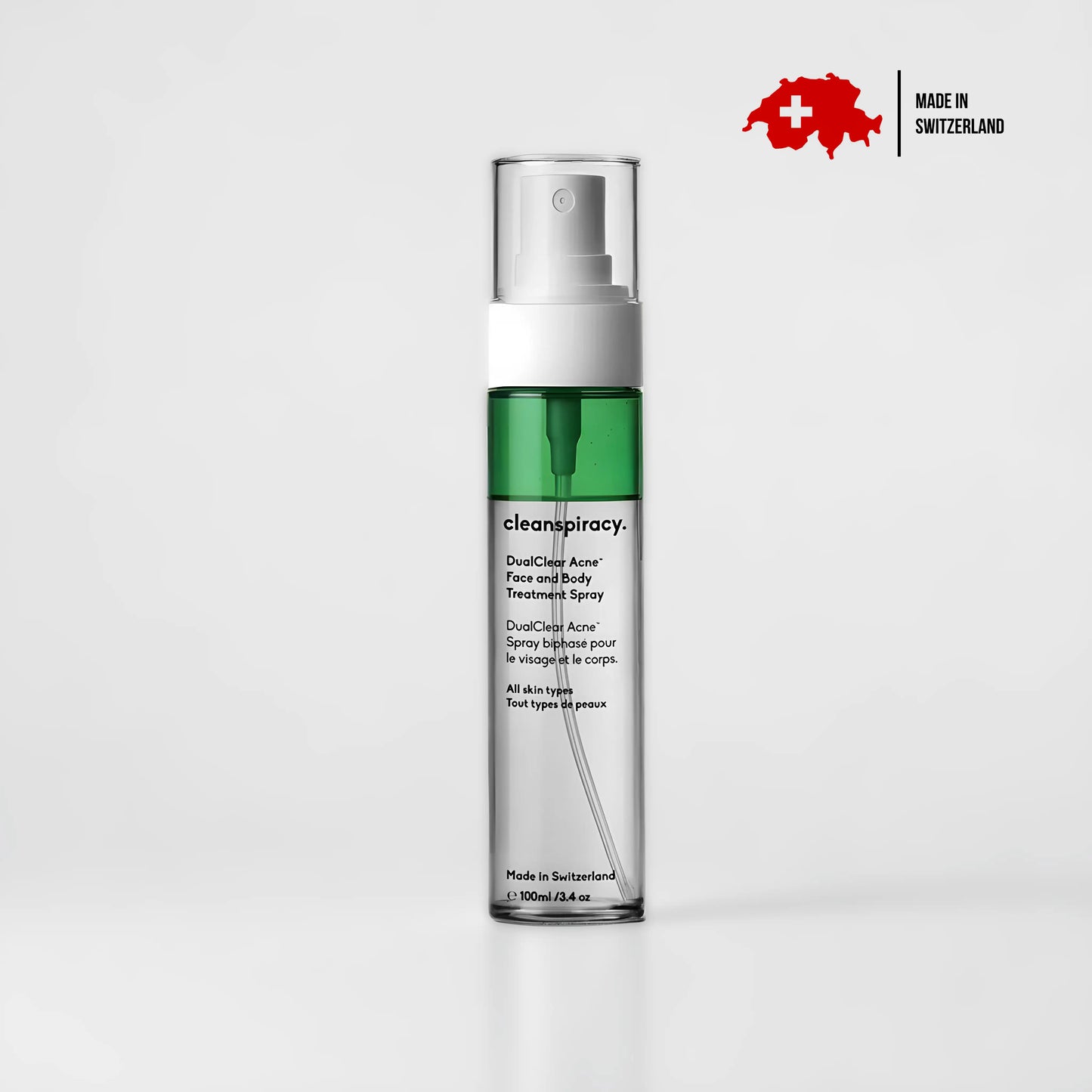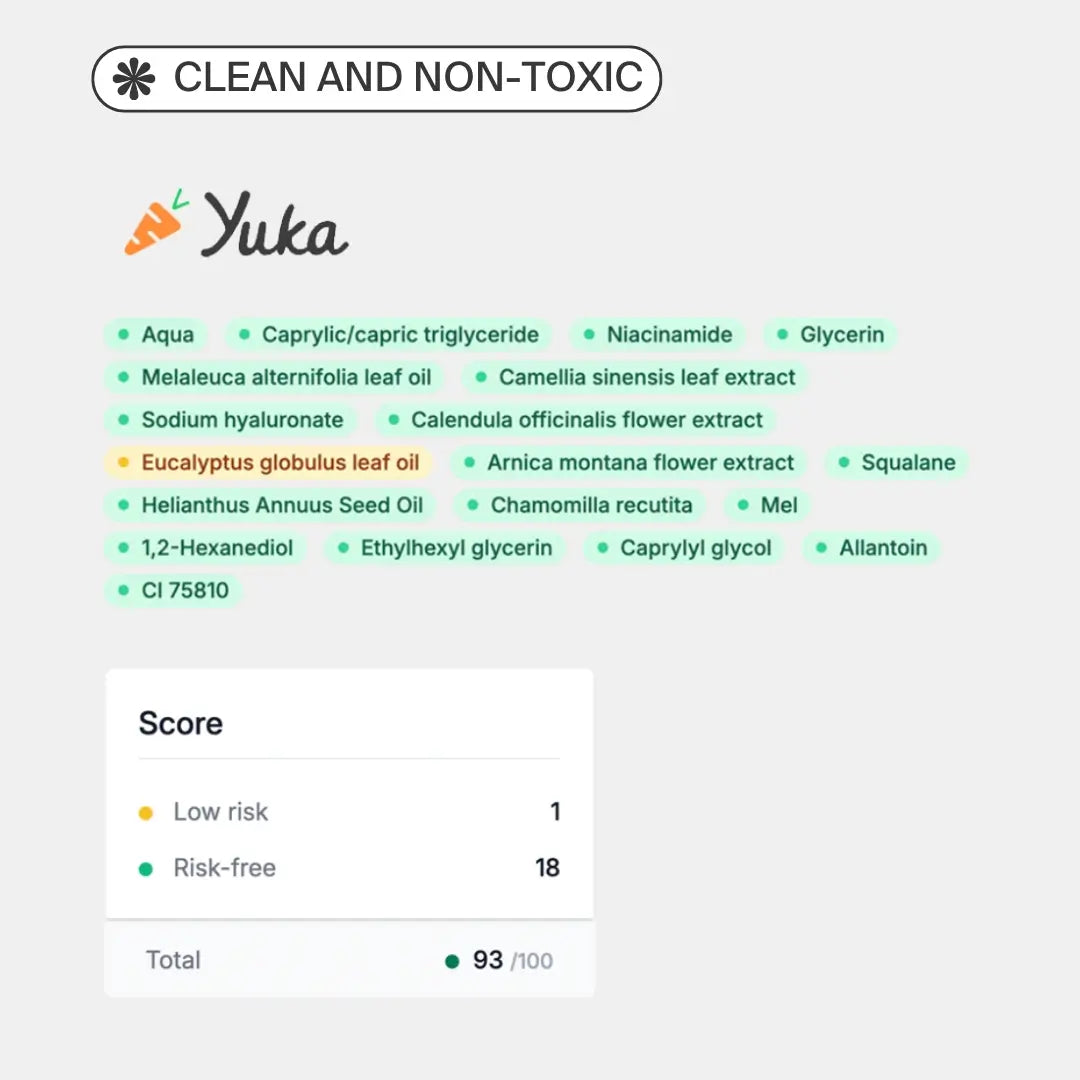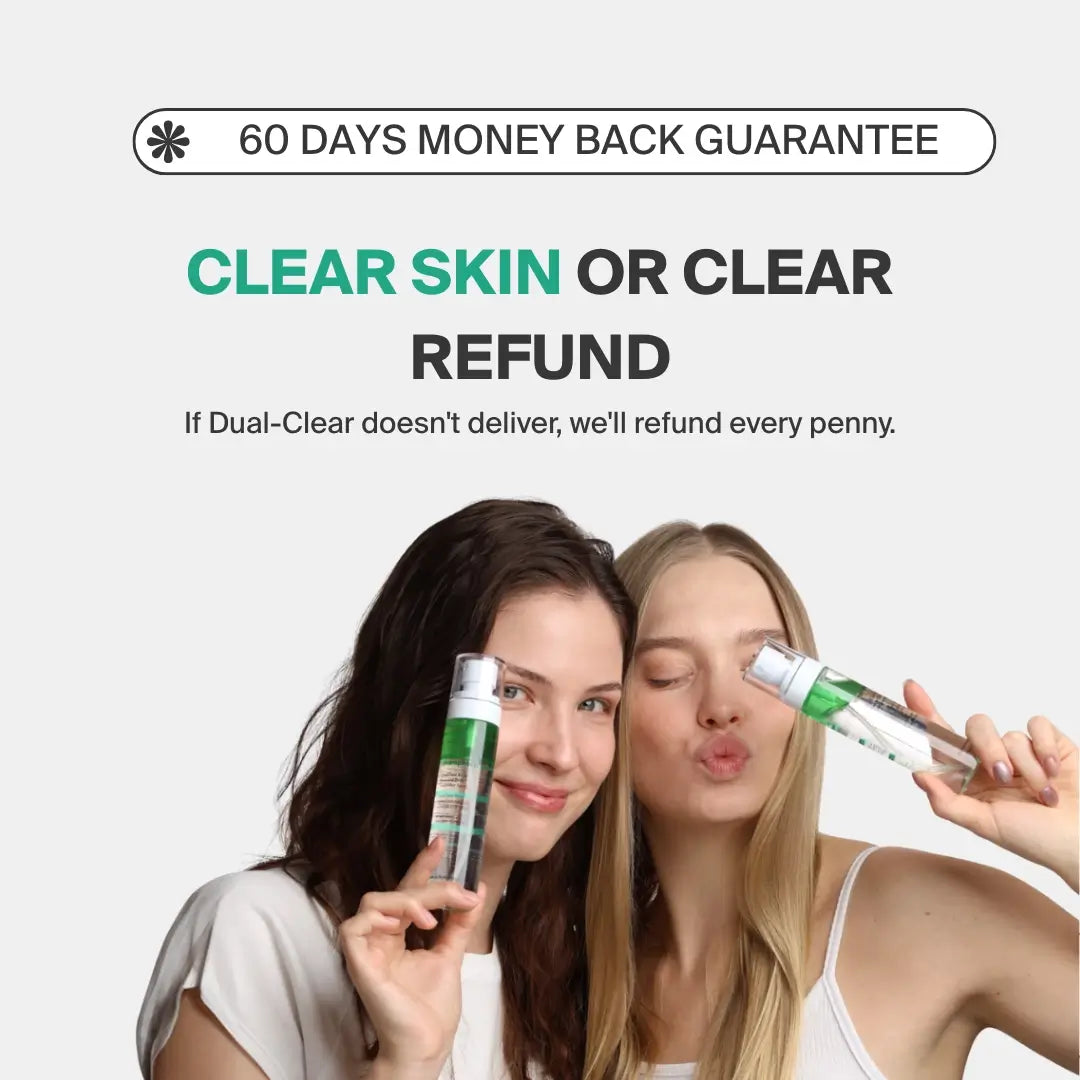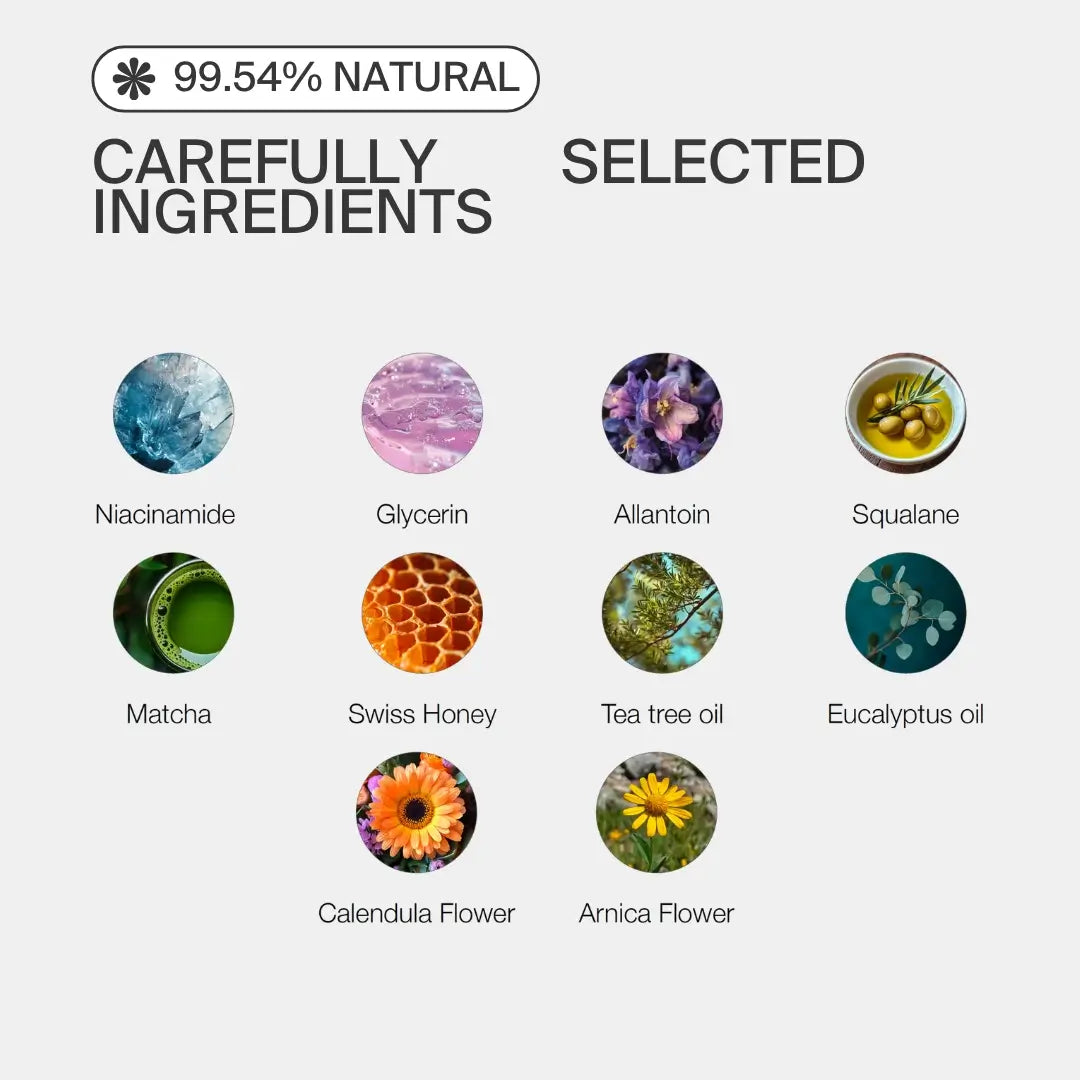4 Warning Signs Your Acne Treatment Is Actually Damaging Your Skin (And What to Do Instead)
 Dr. Sarah Johnson
Dr. Sarah Johnson
You've been diligent with your routine, yet the breakouts persist—and now your skin feels irritated, dry, and more sensitive than ever. What if the products you're using to fight acne are making it worse?
Many conventional treatments wage war on your skin, stripping its natural defenses in a misguided attempt to eliminate oil and bacteria. This approach ignores a fundamental truth: healthy skin is not achieved through aggression, but through balance.
At the heart of this balance is your skin barrier—a delicate, protective layer of oils and lipids that locks in moisture and keeps irritants out. When this barrier is damaged, your skin becomes vulnerable, leading to a cascade of problems—including more breakouts.
Here are 7 warning signs your treatment is destroying your barrier (and what to do instead).
Warning Sign #1 Persistent Tingling or Burning Sensation

The old adage, "no pain, no gain," has no place in skincare. A mild, brief tingle from a potent active ingredient can be normal, but a persistent stinging or burning sensation upon application is a clear distress signal. This is your skin telling you that the product is too harsh and is actively causing irritation.
WHAT IT MEANS: This sensation is often a direct result of ingredients that are aggressively stripping your skin's protective oils. The American Medical Association notes that a common side effect of many topical acne medications is a tendency to cause skin irritation that can limit tolerability. This irritation is a sign that your skin barrier is being actively compromised.
WHAT TO AVOID: High concentrations of denatured alcohol, synthetic fragrances, and harsh chemical exfoliants. If a product consistently makes your skin feel like it's on fire, it's not working; it's causing harm.
WHAT TO DO INSTEAD: Choose products formulated with soothing, anti-inflammatory ingredients. Look for gentle, natural compounds like Calendula, Chamomile, and Arnica, which calm the skin while delivering effective treatment. The goal is to work with your skin, not against it.
Warning Sign #2 Increased Dryness or Flakiness After Use

Many acne treatments are designed to reduce sebum (oil) production. However, there's a significant difference between balancing oil and completely stripping your skin of it. If your skin becomes noticeably dry, flaky, or develops rough patches after using a product, that treatment is excessively dehydrating your skin.
WHAT IT MEANS: This is a classic sign of a damaged skin barrier. A healthy barrier prevents Transepidermal Water Loss (TEWL), keeping skin hydrated. Research published in the Medical Science Monitor shows that many acne therapies disrupt this barrier, elevating TEWL levels and causing significant dryness. This excessive dryness can even trigger your skin to produce more oil to compensate, leading to more clogged pores.
WHAT TO AVOID: Foaming cleansers containing Sodium Lauryl Sulfate (SLS) and treatments that rely on high percentages of drying alcohols. These ingredients are notorious for stripping the skin's natural moisture.
WHAT TO DO INSTEAD: Opt for hydrating formulas that support the skin barrier. Ingredients like Hyaluronic Acid and Squalane provide essential moisture without clogging pores. A balanced formula will treat acne while ensuring your skin remains hydrated and supple.
Warning Sign #3 Redness That Worsens Instead of Improves

Acne is an inflammatory condition, so some redness is expected. However, if your acne treatment consistently leaves your skin looking more red, blotchy, or inflamed, it's a sign that the product is exacerbating the problem rather than solving it.
WHAT IT MEANS: Your skin is having an inflammatory reaction to the product itself. According to the Cleveland Clinic, inflammation and irritation are key indicators of a damaged skin barrier. This means the treatment is not only failing to calm your existing breakouts but is also creating a more reactive environment for future ones.
WHAT TO AVOID: Products with a long list of potential irritants, including synthetic dyes, harsh preservatives, and high-risk chemical actives. Be especially wary if the redness is accompanied by itching or swelling.
WHAT TO DO INSTEAD: Focus on ingredients known for their calming properties. Niacinamide is a powerhouse ingredient that helps reduce inflammation and redness while also supporting the skin barrier. Green Tea Extract is another excellent choice, offering potent antioxidant and anti-inflammatory benefits.
Warning Sign #4: Ingredient Lists Loaded with Sulfates, Alcohol, or Synthetic Fragrances
These ingredients are known barrier-strippers. As one dermatologist explains, drying alcohols like ethyl alcoholor isopropyl alcohol should not be used by acne-prone patients as they can strip the skin.
Sulfates are aggressive detergents that wash away your skin’s natural oils, and synthetic fragrances are a leading cause of irritation and allergic reactions.
Clinically proven. 99.54% natural. Face, chest, back cleared with one mist. Because breakouts don’t care where they land, and we don’t either.
Please view this on a product page
Couldn't load pickup availability
Description
A Swiss-made, 99.54% natural bi-phase spray for face, chest, and back acne. Dermatologist-tested, fast-drying, gentle, and effective for clear, balanced skin.
Key Benefits
Dual-Clear's intelligent two-phase system creates perfect harmony: one layer tenderly supports your skin barrier while the other delivers gentle, targeted care exactly where your skin needs it most.
How to Use
- Shake Well
Let the dual phases unite for balanced, effective care. - Mist mindfully
Spray directly onto clean skin wherever your skin needs support - Air dry naturally
Let the gentle formula absorb at its own pace - Repeat with kindness
Morning and evening, as part of caring for yourself
Full ingredients
Aqua (Swiss Alpine Water), Caprylic/Capric Triglyceride, Niacinamide, Glycerin, Melaleuca Alternifolia Leaf Oil, Camellia Sinensis Leaf Extract*, Sodium Hyaluronate, Calendula Officinalis Flower Extract*, Eucalyptus Globulus Leaf Oil, Arnica Montana Flower Extract*, Squalane, Helianthus Annuus Seed Oil, Chamomilla Recutita Flower Extract*, Mel*, 1,2-Hexanediol, Ethylhexylglycerin, Caprylyl Glycol, Allantoin, CI 75810
*Certified Organic
- 99.54% natural ingredients
- barrier-friendly care
- swiss-made honest quality
- Stinging & drying sensations
- A complicated routine stealing your time
- Toxic Substances & Forever Chemicals
Tax and Shipping
Standard shipping €4.99 (3–5 days) | Express €13 (2–3 days). Taxes, duties, and import fees may apply. See full details in our Shipping policy.




















